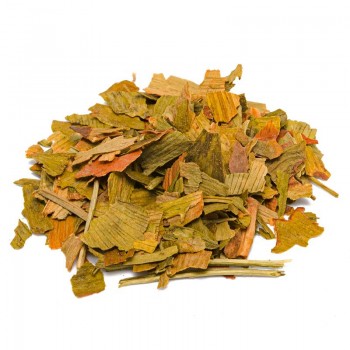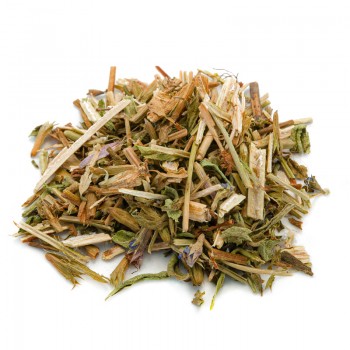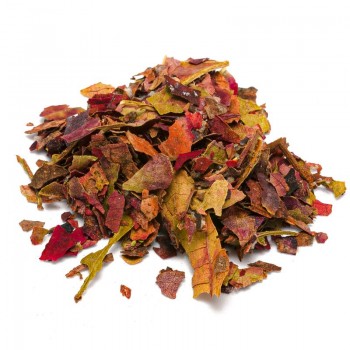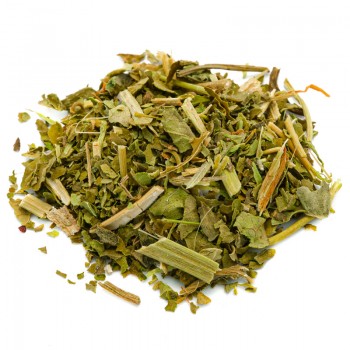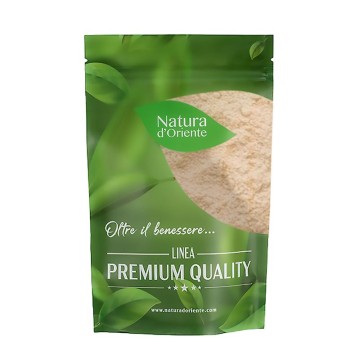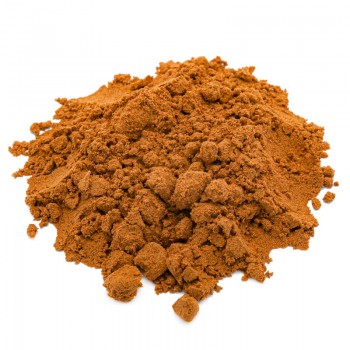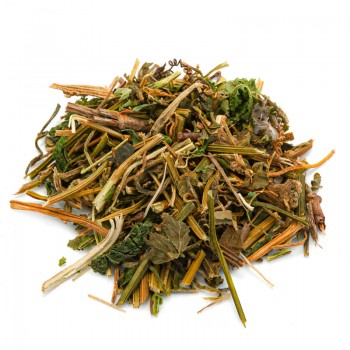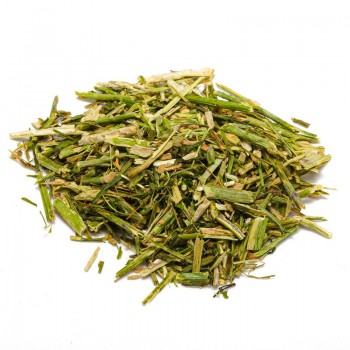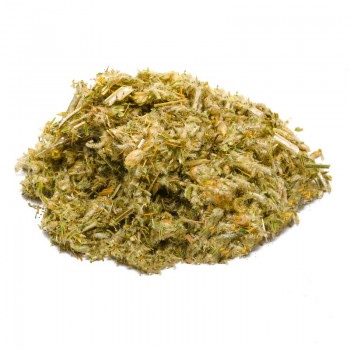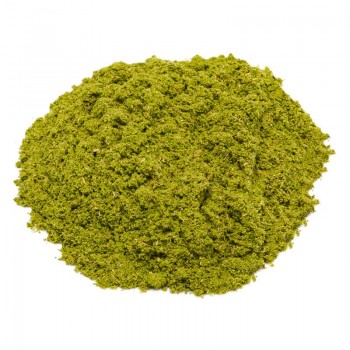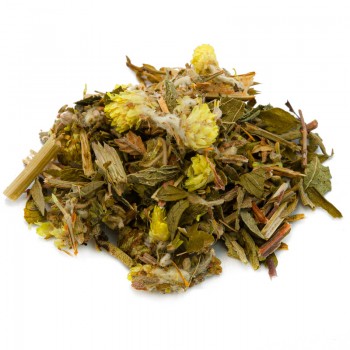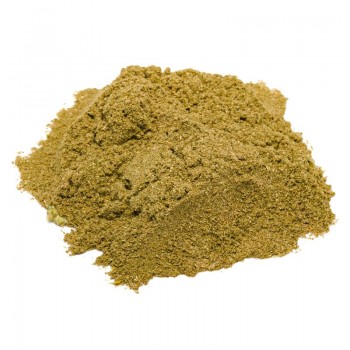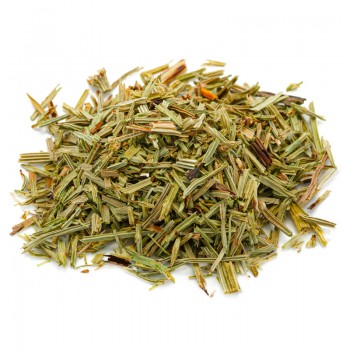Among the various parts of burdock, we know that in the leaf extract, the isolated active compounds can be beneficial for the skin.
It has often been indicated in the past as a curative plant for acne, dermatitis, psoriasis, eczema. This property derives from the presence of phenolic acids, including arcthiopicrin, which contain natural antiseptic characteristics.
Burdock: properties and benefits
These purifying properties are also useful for making the bandana a natural remedy for cystitis disorders, and for irritations of the oral cavity.
Burdock leaves, in fact, possess characteristics capable of inhibiting the growth of microorganisms in the oral cavity.
Burdock is considered a plant that improves the detoxification of the body thanks to its draining activity.
The acids contained facilitate the elimination of toxins from the body and improve the activity of the kidneys, liver and intestines. The assumption of these beneficial principles can be done through herbal tea of burdock leaves.
For other dermatological benefits, on the other hand, topical compresses and lotions can be used to improve the appearance of oily and acne-prone skin - it improves the symptoms of acne vulgaris .
Burdock leaves can be applied as a lotion on blackheads, to treat seborrheic dermatitis, and to soothe skin irritations - with anti-itch properties.
Historically, burdock was known to help prevent skin infections, also as an anti-fungal function, and to calm burns.
Burdock also contains many antioxidants and can have an anti-aging action.
It can improve the elasticity and synthesis of collagen, and reduce the formation of wrinkles.
Origins and History of cultivation
Burdock is a plant whose original family (Asteracea) probably derives from South America, but has been present for millennia in Asia and Europe - where it has been used by many different cultures , getting different names.
The Latin name Arctium Lappa comes from two sources. The first, Greek, seems to derive from the Greek word arktos or bear - referring to fruit with a hairy coating. The second comes from the Latin word labein, which means to cling, or from the Celtic lappa meaning hand - in any case, it refers to the flowers that attach themselves to passers-by, man or animal.
For hundreds of years, burdock (Niu Bang Zi in Chinese) has been used in the East as a culinary ingredient that is normally boiled in soy sauce in Korea and Japan.
In different parts of the world, not only in Asia but also in Europe and among Native Americans, burdock root was part of the handbook of folk healers.
Burdock has been used in traditional Chinese medicine (TCM), for many of its health features, from blood purification to diabetes treatment and liver purification (hepatoprotective) .
Thanks to its diuretic and sweat characteristics, it is considered an important purifying plant, and also useful for sweating in order to treat flu and colds.
Folk medicine also assigned the plant laxative and antirheumatic properties - against the pain of arthritis and gout.
The root was harvested before flowering, then cut and dried - to obtain the excellent content of inulin - a substance that was then considered highly effective against bacteria and fungi. < / p>
Burdock leaves were used fresh or dried, due to their equally valid content of inulin, and the bitter principle of arcthiopicrin - due to the phytotherapeutic properties of the plant.
In particular, for topical use, burdock leaves were considered refreshing and good for treating old ulcers and sores, in a calming way.
The leaves were also applied with wine, against snake bites, or with egg white for burns, wounds and skin irritations.
Some testimonies speak of a healing from the infectious skin disease of King Henry III of Castile (late 14th century), thankswith burdock extracts proposed by an Italian doctor.
Native Americans also knew about burdock: they used the whole plant as food, and boiled the stem in maple syrup. Medically, the Indians used it to treat rheumatism, to purify the blood and help circulation, for whooping cough.
A curiosity is that the burdock quills were also the inspiration for the inventor of Velcro fasteners, after having found them embedded in the dog's fur.
Plant and flowers
Arctium lappa, commonly called greater burdock, gobō, or other local names, is a Eurasian species of plants from the Aster family.
Burdock has been grown in gardens since ancient times for its root used in an edible way.
It is a biennial plant, which grows with a long tap root and a basket of leaves the first year, a stem of flowers the second year, produces the seed and dies .
Burdock seedlings resemble many other weed weed seedlings, until they take on a definite shape.
The color of the leaves varies from greyish to deep green at the top, with a lighter underside.
In the culture where it was considered edible, young burdock leaves and stems were collected in early spring to make salads, or add them to a sauté. The stems have a mild flavor, similar to that of asparagus.
Burdock in Japan features a root crop called Gobo, which is harvested and washed. They are considered as crunchy as carrots, and have a slightly sweet flavor.
Burdock flowers resemble thistle flowers, with pointed purple-pink petals, very showy for attracting pollinating insects.
Nutritional values of Burdock leaves
Among the components of this plant there are different nutrients, partly in the root and partly in the leaves.
The main bioactive components of burdock are some organic acids (such as caffeic acid, chlorogenic acid) and substances such as inulin and arcthiopicrin (crystalline sesquiterpene lactone - element based on
In addition, it provides some minerals, vitamins, and amino acids and volatile oils .
How to consume Burdock as an herbal tea and in the kitchen
For a good infusion of the herbal tea cut leaves, it is advisable to use for a cup (250 ml), about 3-5 grams, with water at 100 ° C.
Leave to infuse for 5 to 8 minutes, before drinking the herbal tea.
Burdock: side effects and contraindications
Burdock is generally considered a safe food, however caution is always recommended for pregnant and breastfeeding women.
An allergic reaction is possible in those sensitive to the Asteraceae / Compositae family, which includes calendula, ragweed, chrysanthemums, and daisies.
If using burdock generates symptoms of dermatitis, discontinue use until symptoms disappear, and consult a doctor.
The bandana could slow down blood clotting and, therefore, is not recommended in association with anticoagulant drugs.

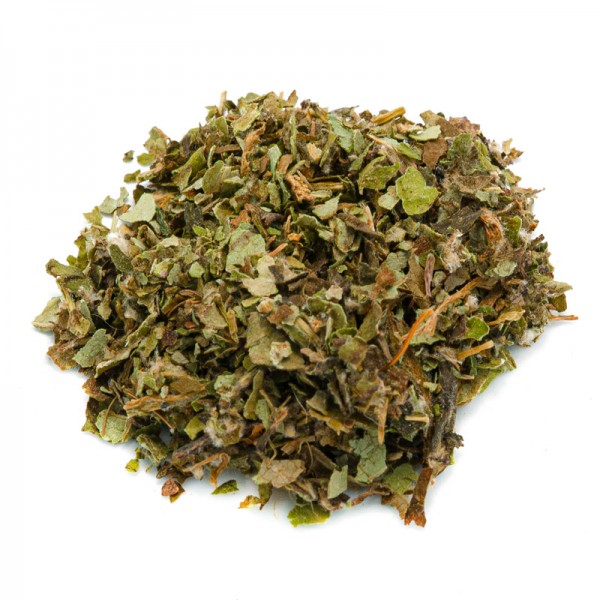









 No reward points for this product.
No reward points for this product.
